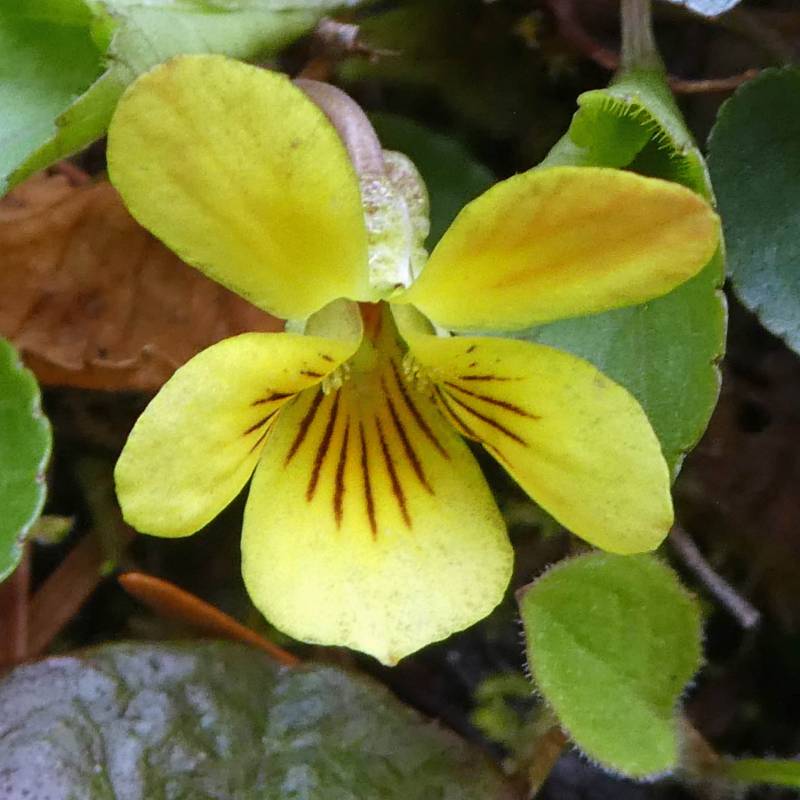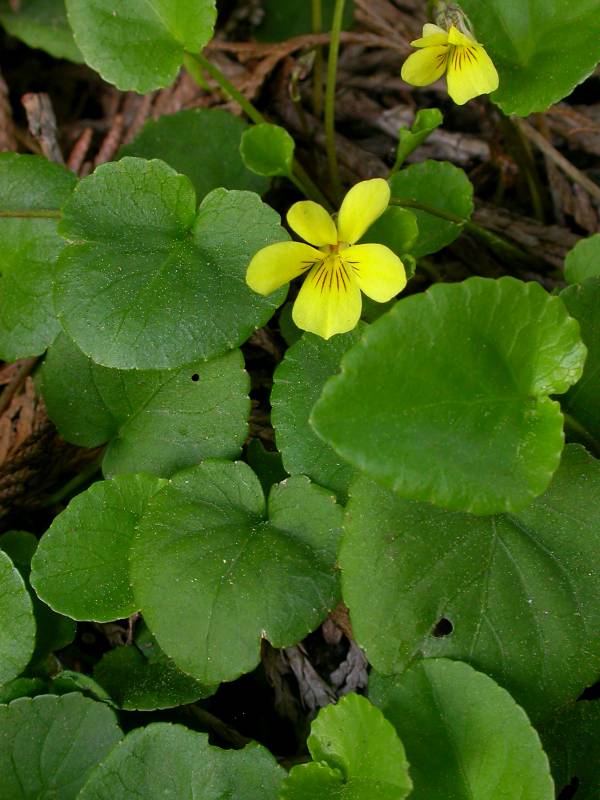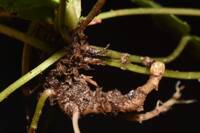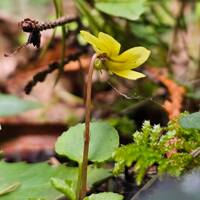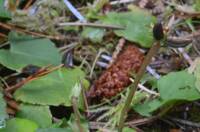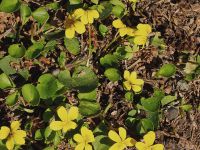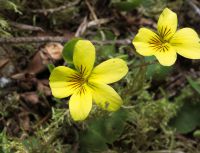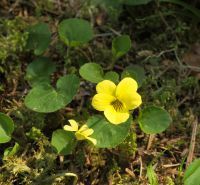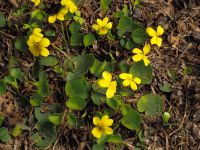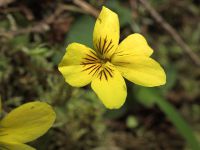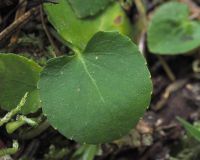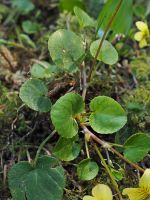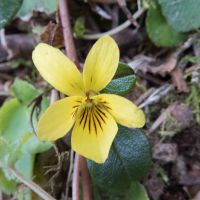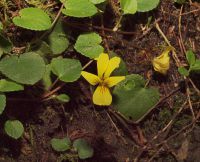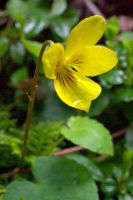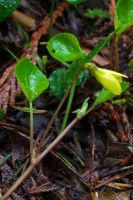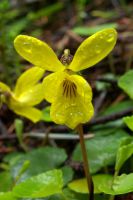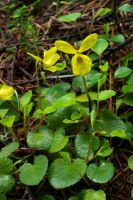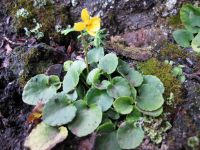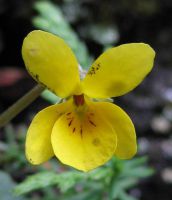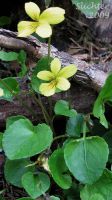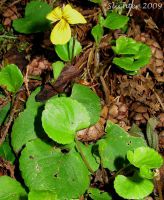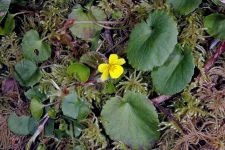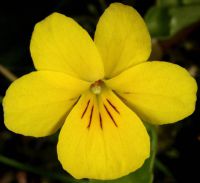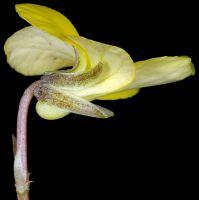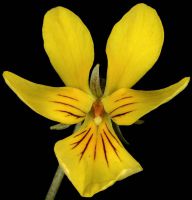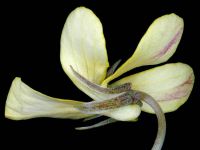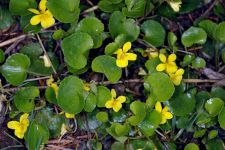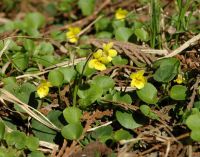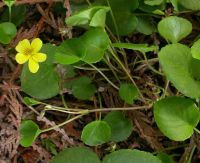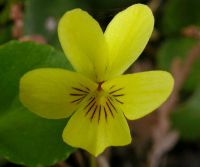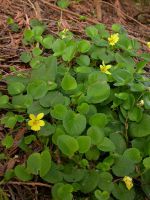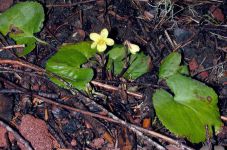Distribution: Occurring west of the Cascades crest and east in the Columbia River Gorge in Washington; British Columbia to California.
Habitat: Moist woods from low to middle elevations in the mountains.
Flowers: March-June
Origin: Native
Growth Duration: Perennial
Conservation Status: Not of concern
Pollination: Bumblebees, bees, flies
Puberulent perennial from scaly rhizomes, with slender, elongate stolons, the aerial stems up to 5 cm. long.
Leaves blades cordate-lanceolate to cordate-ovate, 1-3 cm. broad, thick and leathery, persisting through the winter; petioles 2-10 cm. long; herbage spotted with tiny purplish blotches; stipules brownish, lanceolate, membranous, mostly entire.
Flowers 5-15 mm. long, the spur short, saccate; peduncles exceeding the leaves; petals lemon-yellow to gold, the lower 3 purplish-penciled, the lateral pair yellow-bearded; style head short-bearded.
Fruit a purplish-mottled, 3-valved capsule, ovary superior, placentation parietal, seeds brown.
Publication: Pittonia 4(20A): 8. 1899.
PNW Herbaria: Specimen records of Viola sempervirens in the Consortium of Pacific Northwest Herbaria database
WA Flora Checklist: Viola sempervirens checklist entry
OregonFlora: Viola sempervirens information
E-Flora BC: Viola sempervirens atlas page
CalPhotos: Viola sempervirens photos

